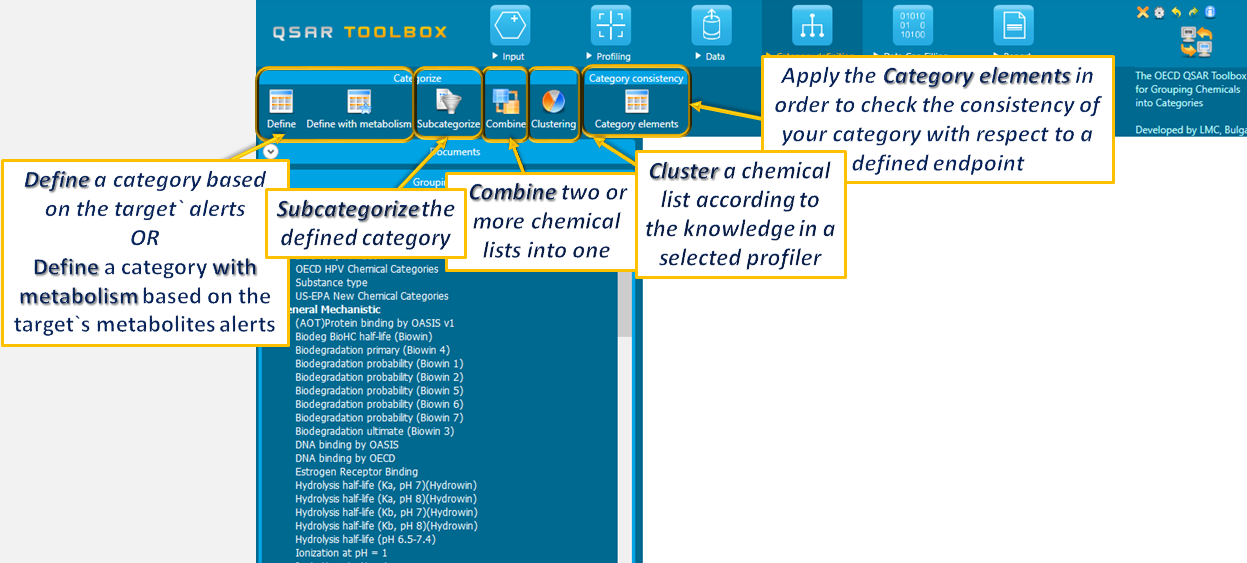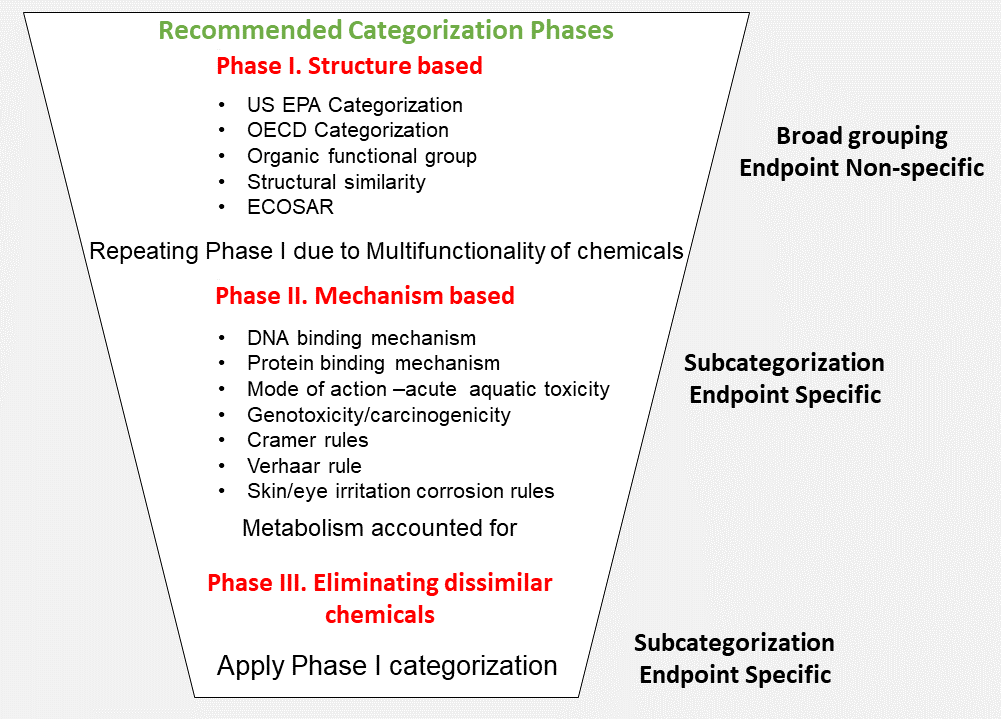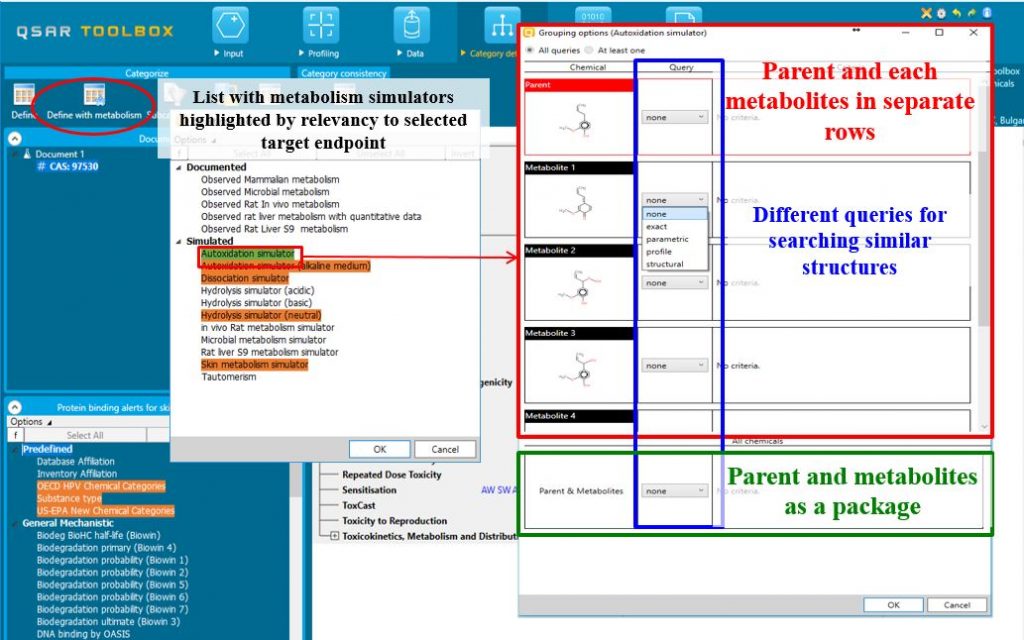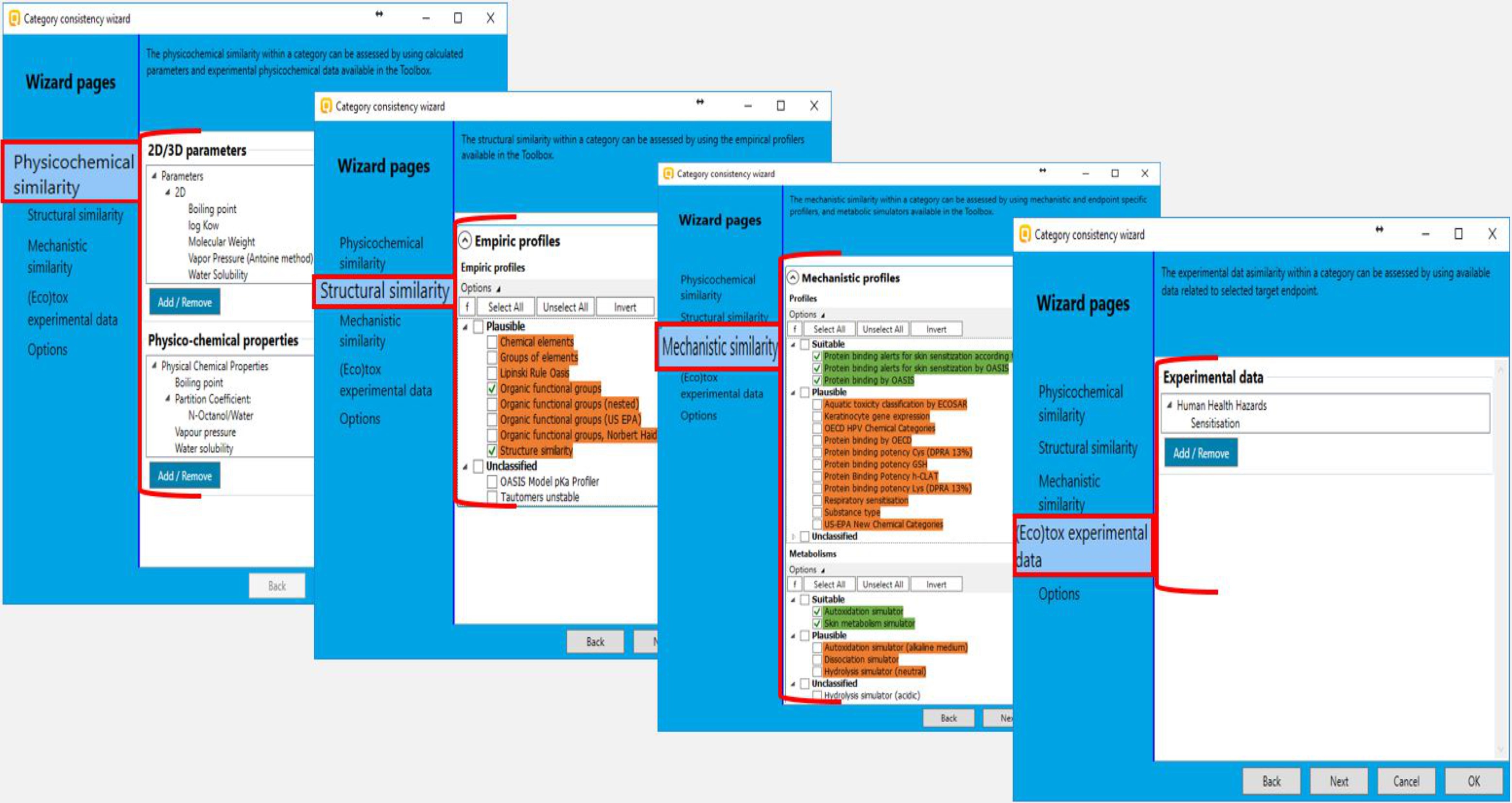Grouping
Category definition module provides the user with several means of grouping chemicals into a toxicologically meaningful category based on the specifics of the target molecule. The chemicals could be grouped according to different measures of “similarity” (structural or mechanistic similarity) so that, within a category data, gaps can be filled by read-across or trend analysis. This is the critical step in the workflow and several options are available in the Toolbox to assist the user in better definition of the category.


In the Category definition section the users are able to:
![]() Search for analogues based on the specifics of the target structure – Find analogues of your substance and the available experimental data for them. The identified analogues (structural and/or mechanistically similar to the target chemical) could be further used for filling the target’s data gaps.
Search for analogues based on the specifics of the target structure – Find analogues of your substance and the available experimental data for them. The identified analogues (structural and/or mechanistically similar to the target chemical) could be further used for filling the target’s data gaps.


![]() Search for analogues based on the specifics of the target`s metabolites – Find analogues of your substance by taking their (a)biotic activation into account. Define searching criteria for a specific metabolite(s) or for the whole package (parent and metabolites)
Search for analogues based on the specifics of the target`s metabolites – Find analogues of your substance by taking their (a)biotic activation into account. Define searching criteria for a specific metabolite(s) or for the whole package (parent and metabolites)
E.g. Search for chemicals that are above 50% structurally similar to your target chemical and produce aldehyde
![]() Check the consistency of the defined category – Applying of the category elements helps you to compare the similarity between the category members with respect to a defined endpoint. Different levels of similarity are considered – physico-chemical, structural, mechanistic similarity and similarity in ADME properties (for human health properties). In addition, all relevant experimental data could be collected in order to support the consistency of the category.
Check the consistency of the defined category – Applying of the category elements helps you to compare the similarity between the category members with respect to a defined endpoint. Different levels of similarity are considered – physico-chemical, structural, mechanistic similarity and similarity in ADME properties (for human health properties). In addition, all relevant experimental data could be collected in order to support the consistency of the category.


![]() Calculate alert performance – Alert performance functionality informs the user on the predictive power of the specific alerts or structural features in the profilers and thus their applicability to build categories of analogues with consistent experimental outcome.
Calculate alert performance – Alert performance functionality informs the user on the predictive power of the specific alerts or structural features in the profilers and thus their applicability to build categories of analogues with consistent experimental outcome.
![]() Subcategorize the defined category – refine the category outside the data gap filling
Subcategorize the defined category – refine the category outside the data gap filling
![]() Combine two or more chemical lists into one or find the common structures between chemical lists
Combine two or more chemical lists into one or find the common structures between chemical lists
![]() Cluster a category – separate a chemical list into clusters based on the knowledge in selected profiler (structural or mechanistic clustering)
Cluster a category – separate a chemical list into clusters based on the knowledge in selected profiler (structural or mechanistic clustering)
